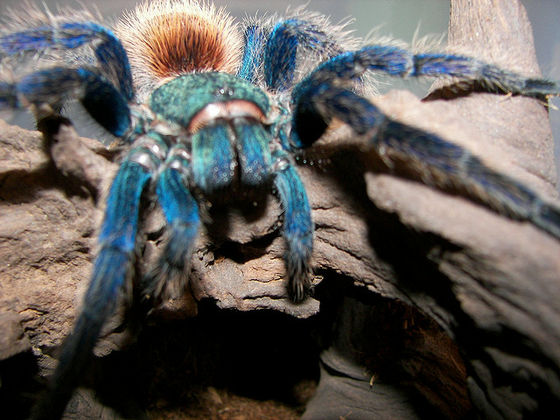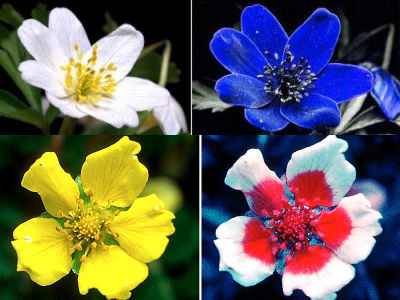Is the "blue" produced by the nanostructure of the tarantula play the future of the wide viewing angle display?

ByMartin Abegglen
"Tarantula" is a word pointing to a poison spider that appears in the European legend. I think that there are many spiders who have such a noisy name in the world, many from the colorful and shaggy appearance and the feeling of bigger size than the imagination, "I'm not good at it"! However, a new research result that published that such a tarantula might have a big influence on "display development with wide viewing angle" was released.
Blue reflectance in tarantulas is evolutionarily conserved despite nanostructural diversity | Science Advances
http://advances.sciencemag.org/content/1/10/e1500709
Blue tarantulas may help humans make better wide-angle computer displays | The Verge
http://www.theverge.com/2015/11/27/9786868/tarantula-blue-iridescent-nanostructures-computer-displays-biomimicry
The research team of Akron University published a research result that "the blue color of Tarantula seems blue rather than rainbow color to human eyes despite vivid coloring". This indicates that "the blue of the tarantula" does not change its appearance by light and dark, and it means that it looks beautiful blue when seen from any angle in the natural world.
In order to investigate this 'blue of tarantula' in more detail, the research team of Akron University seems to have analyzed the hair of Tarantula using microscopic examination technology. This analysis reveals that the species named Tarantula does not use specific pigments or the like to produce "blue of tarantula".

ByJohn
Then, as for how the "blue of tarantula" is born, the nanostructure in the body hair of spiders reflects the blue light and the vivid coloration is expressed. Why is this' blue of tarantula 'special, because it expresses' vivid blue' when seen from anywhere 'only by reflection of light. In the usual case, it seems to be very special that 'always looks blue' where you look like a rainbow when it reflects light. It is also clear that the nano-structure of tarantula's hair is different for each type of tarantula.

The most important thing in this discovery is that "blue of tarantula" does not change its appearance by light and darkness, angle, etc. "Tarantula can be an important model to make color-producing technology such as TV, telephones and other devices more visible," says Todd Blackledge of Akron University. Specifically, it may be a hint to develop "more energy saving wide viewing angle display".
Indeed, almost all scientists said that "blue of tarantula will serve something important purpose" after the results of this research are published, and Bor-Kai Hsiung of Akron University, a member of the research team Mr. said, "If it turns out how tarantula produces 'blue of tarantula', it may be able to solve the biggest constraint when applying structural color." However, the researchers do not understand how to reproduce the blue color even if they knew which structure of the tarantula produces "blue of the tarantula", and in the future a method for reproducing the "blue of the tarantula" We will be looking for something.

ByBarry Peddycord III
There are at least 40 kinds of blue seeds in the tarantula, but I do not know why so many tarantulas are vivid blue. Tarantula is not good vision, young tarantula loses blue when moulting at adulthood. Therefore, it is thought that the body of the tarantula is blue is not "to identify fellows". In addition, the tarantula grasps the surrounding situation and carries out courtship behavior by using vibration instead of vision.
Related Posts:







